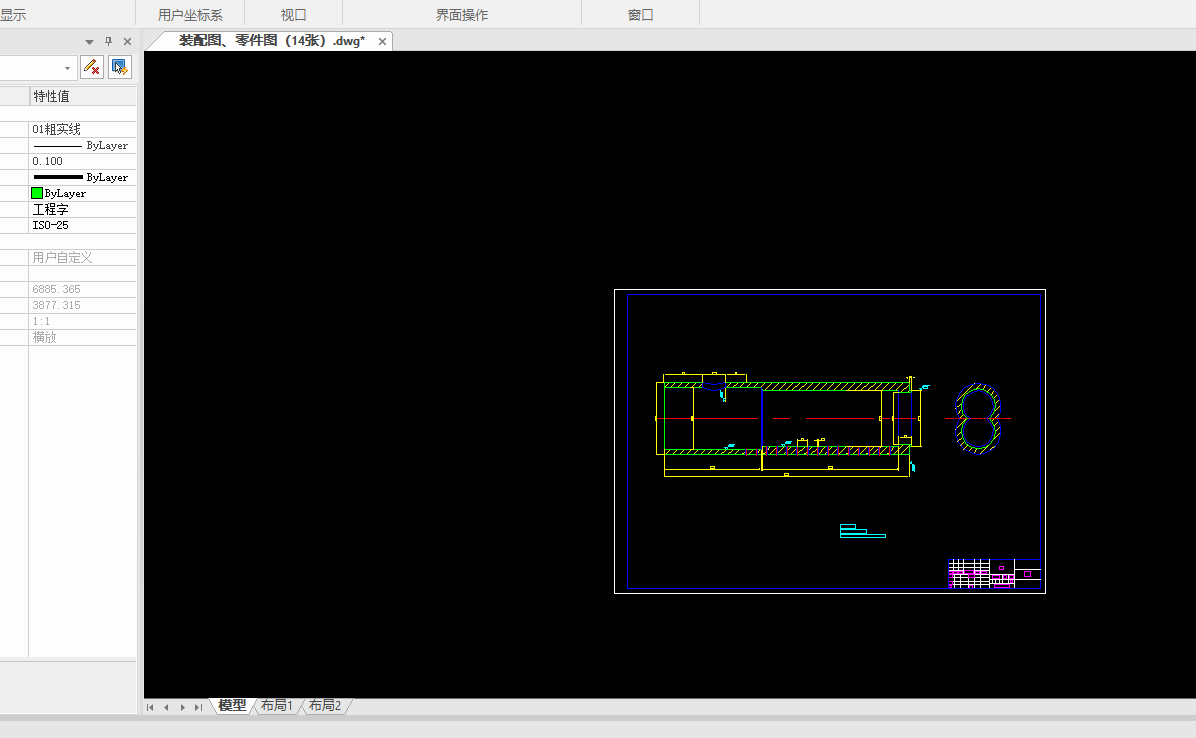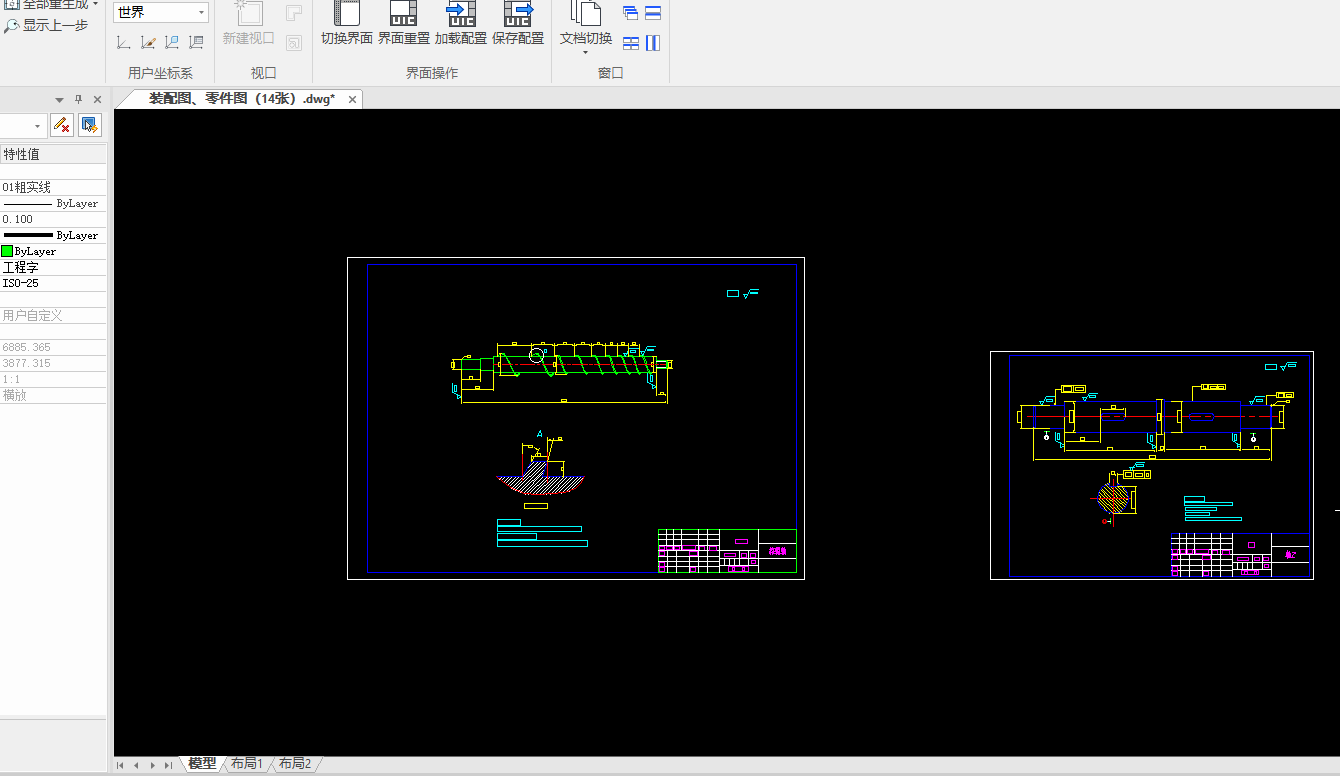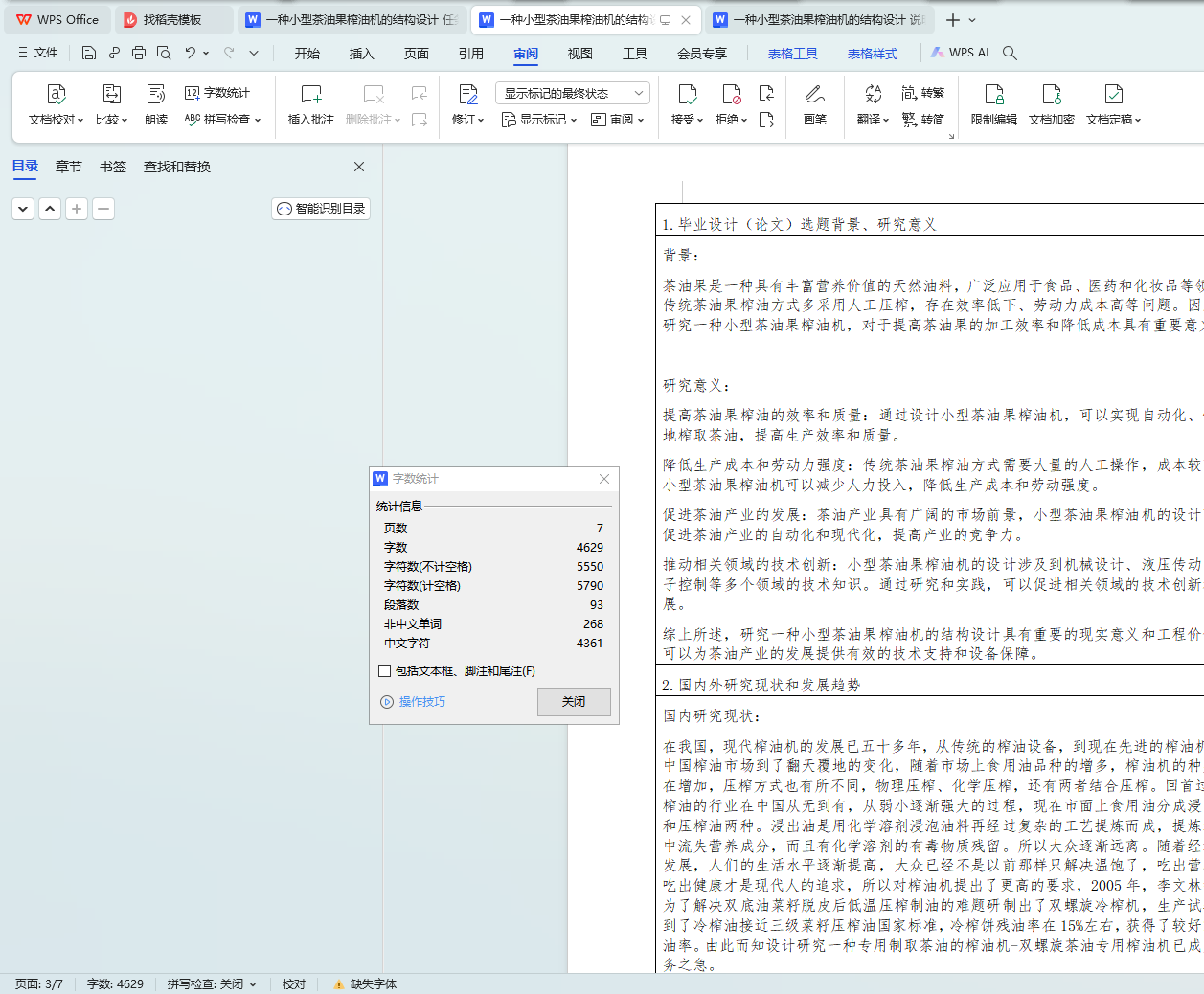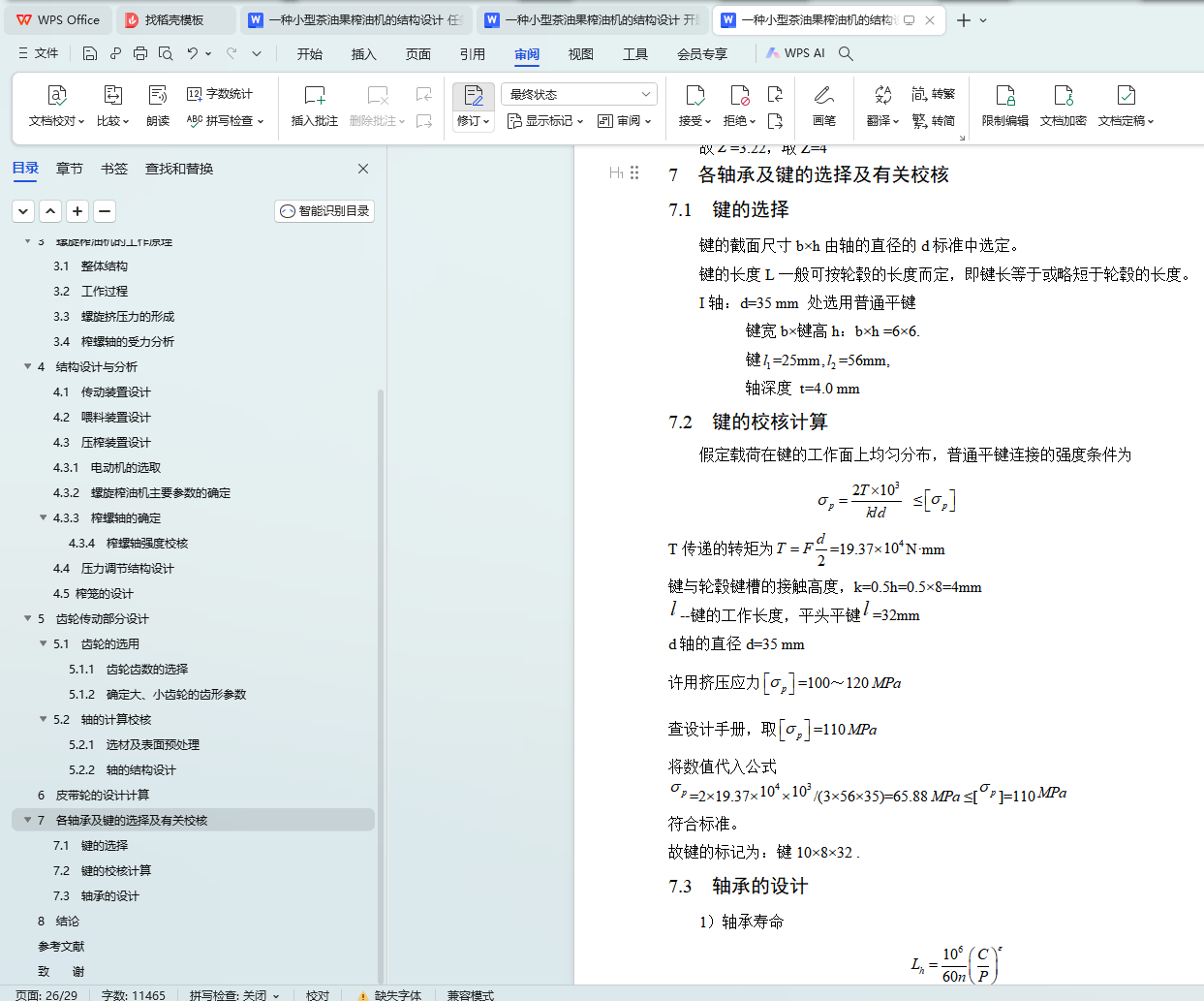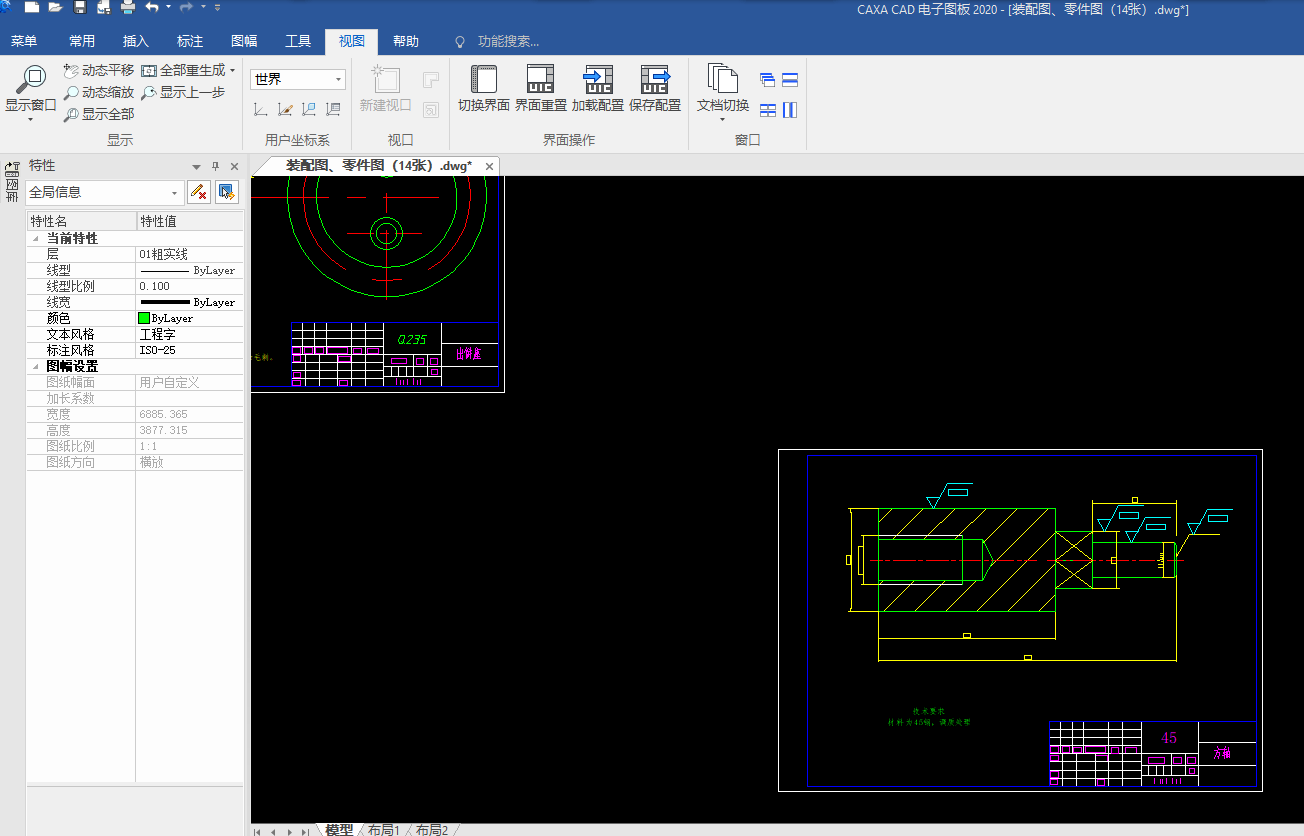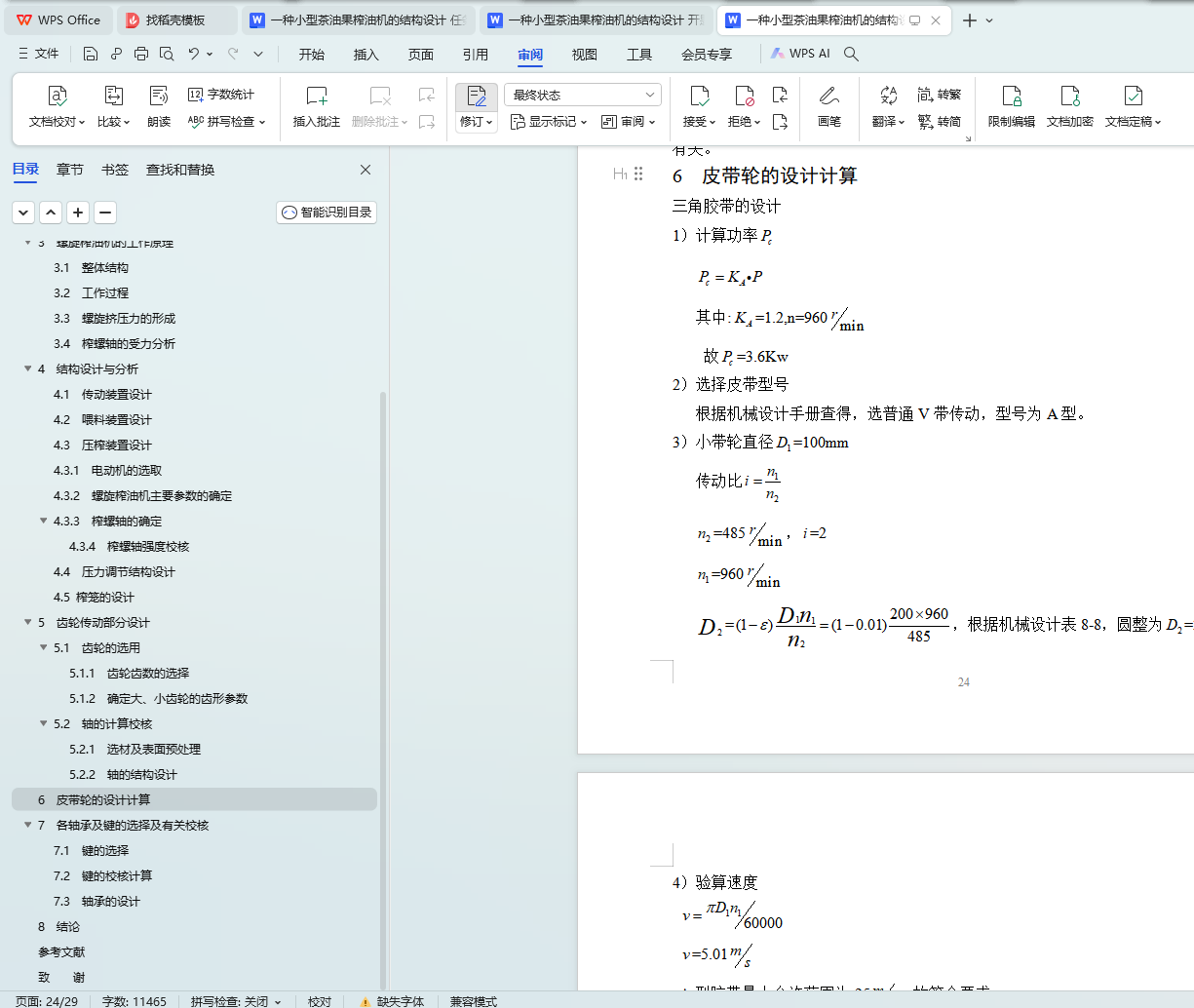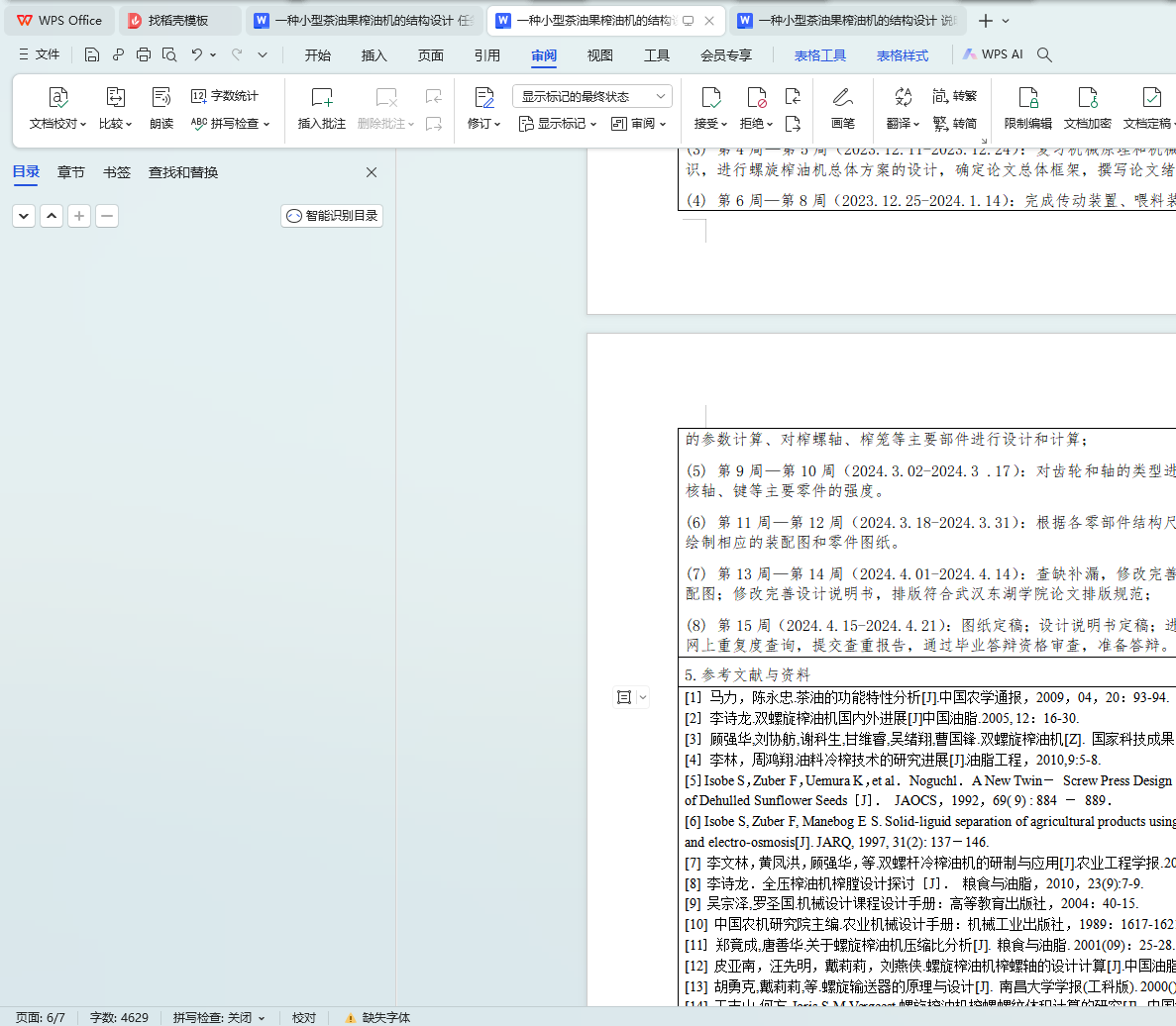摘 要
随着现代人们的生活水平不断提高,大家对食用油的品质和种类的选择有了更大的选择空间。中国疾病预防控制中心营养与食品安全所对橄榄油和茶油及逆行的对比研究表明,茶油与橄榄油的成分尽管有相似之处,但茶油的食疗双重功能实际上优于橄榄油,也优于其他任何油脂。茶油中的不饱和脂肪酸高达85%~97%,为各种食用油之冠。
本研究设计了一种高效、自动化、多样化的小型茶油果榨油机。该榨油机采用了先进的机械设计和液压传动技术,实现了自动化和高效化的榨油过程。同时,通过引入多种传感器和执行器,实现了机器的远程监控和自动控制,提高了生产效率和产品质量。此外,该榨油机还采用了节能技术和优化措施,降低了能源消耗和环境污染。通过实验和现场测试,验证了该榨油机的性能和可靠性。本研究对于促进茶油产业的发展和提高生产效率具有重要意义,同时也为相关领域的技术创新提供了有益的参考。
关键词:小型茶油果榨油机、机械设计、液压传动、CAD
Abstract
With the continuous improvement of modern people's living standards, people have a greater choice of the quality and type of cooking oil. The comparative study of olive oil and camellia oil and retrograde in the Institute of Nutrition and Food Safety of the Chinese Center for Disease Control and Prevention shows that despite the similarities between the composition of camellia oil and olive oil, the therapeutic function of camellia oil is actually better than that of olive oil and better than any other oil. The unsaturated fatty acids in camellia oil are as high as 85%~97%, for the crown of various edible oils. In this study, an efficient, automated and diversified small camellia avocado oil press was designed.
The oil press adopts the advanced mechanical design and hydraulic transmission technology to realize the automatic and efficient oil pressing process. At the same time, by introducing a variety of sensors and actuators, we realize the remote monitoring and automatic control of the machine, and improve the production efficiency and product quality. In addition, the oil press also adopts energy-saving technology and optimization measures to reduce energy consumption and environmental pollution. The performance and reliability of the oil press are verified by experiments and field tests. This study is of great significance for promoting the development of camellia oil industry and improving the production efficiency, and also provides a useful reference for the technological innovation in related fields.
Key words: small camellia fruit oil press, mechanical design, hydraulic transmission, CAD
目录
摘 要
Abstract
1 前言
1.1 选题意义
1.2 国内研究现状
1.3 国外研究现状
2 方案的确定
3 螺旋榨油机的工作原理
3.1 整体结构
3.2 工作过程
3.3 螺旋挤压力的形成
3.4 榨螺轴的受力分析
4 结构设计与分析
4.1 传动装置设计
4.2 喂料装置设计
4.3 压榨装置设计
4.3.1 电动机的选取
4.3.2 螺旋榨油机主要参数的确定
4.3.3 榨螺轴的确定
4.3.4 榨螺轴强度校核
4.4 压力调节结构设计
4.5 榨笼的设计
5 齿轮传动部分设计
5.1 齿轮的选用
5.1.1 齿轮齿数的选择
5.1.2 确定大、小齿轮的齿形参数
5.2 轴的计算校核
5.2.1 选材及表面预处理
5.2.2 轴的结构设计
6 皮带轮的设计计算
7 各轴承及键的选择及有关校核
7.1 键的选择
7.2 键的校核计算
7.3 轴承的设计
8 结论
参考文献
致 谢
